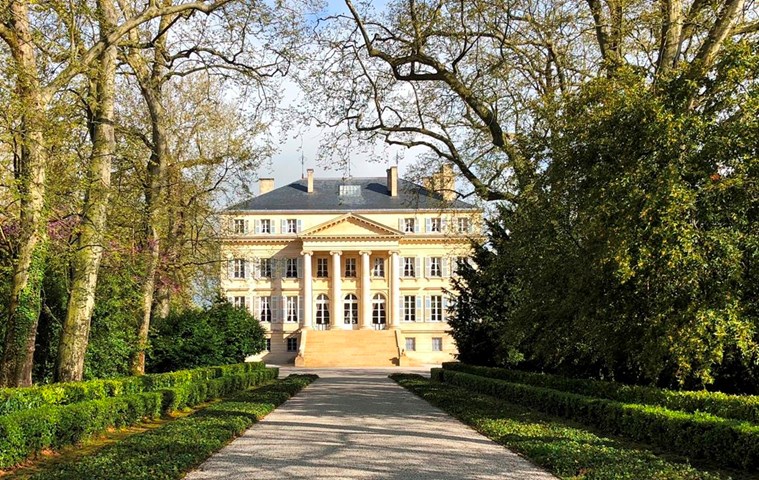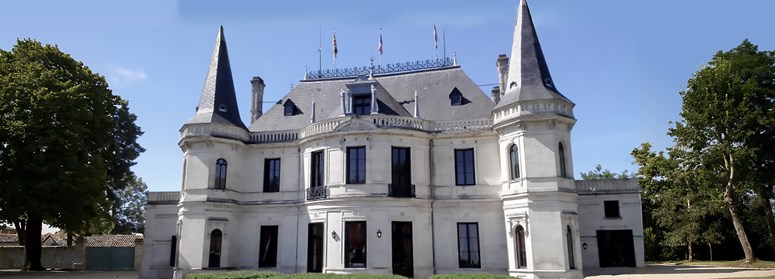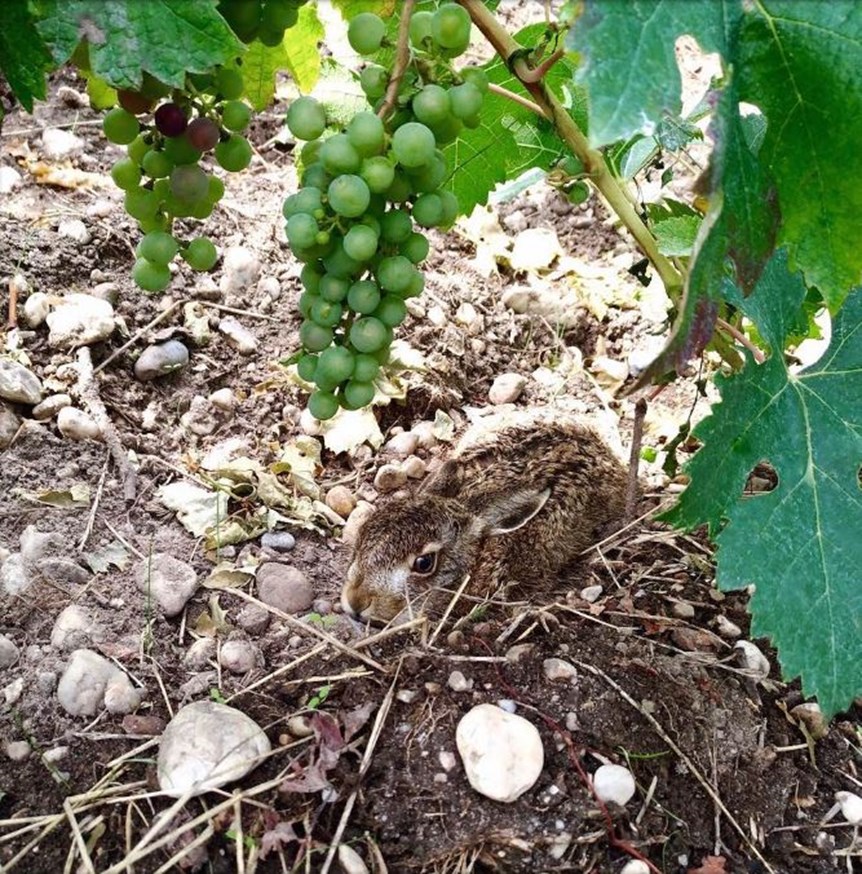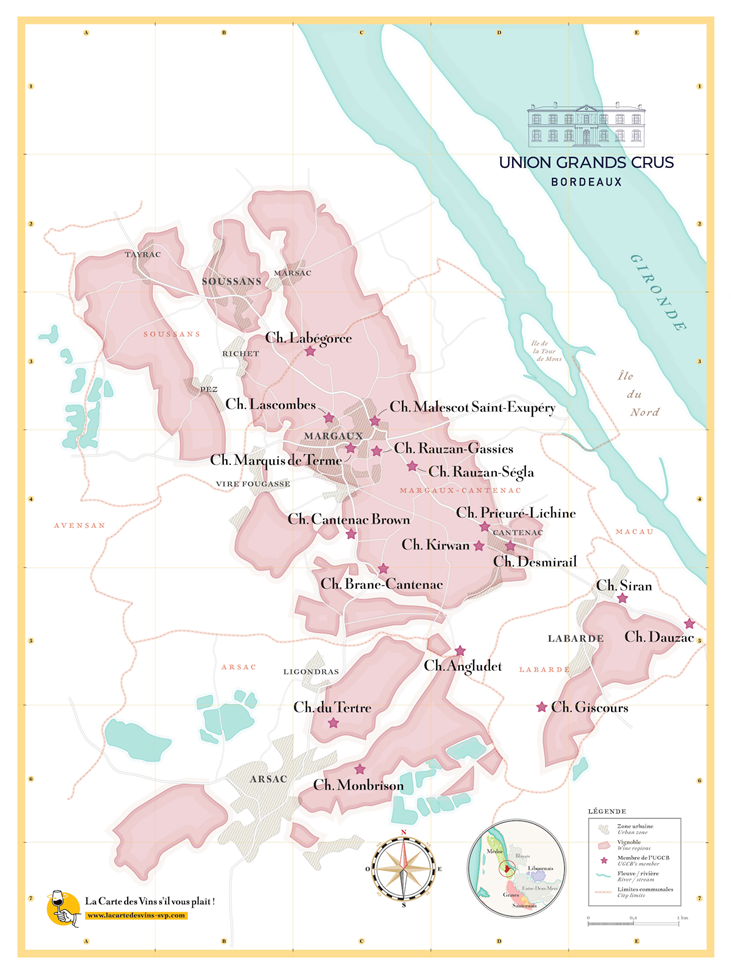A guide to Margaux

Our Bordeaux offers often make reference to the 'classic' styles of wines from the terroirs of Margaux, Pauillac, St-Julien, St-Estephe, Pomerol, and St-Emilion. Not everyone is familiar with these, so, in advance of the Bordeaux 2022 En Primeur campaign, here are some handy guides to the classic terroirs in the region and how they express themselves in the finished wines, starting with Margaux.
Margaux consists of 1530 hectares of vines, on the left bank of the Gironde estuary, in the Médoc peninsula. It boasts an impressive 21 of the 61 crus in the famous 1855 classification, the highest number of any appellation. It is also, geographically, the first of the four famous left-bank communes we arrive at, driving north from the city of Bordeaux through the Médoc.
The name dates back to the 4th century AD, when the Roman poet Ausonius referred to this area as 'Marojallia' (we have been unable to find the origins of this word)*.

The eponymous Château Margaux, first recorded as a manor in 1152, known as “La Mothe de Margaux”, La Mothe meaning 'mound'.
Like the rest of the Médoc, the climate here is maritime, with mild winters and warm summers, with the proximity of the Atlantic Ocean tempering the effects of temperature fluctuations. The terroir is predominantly gravelly soils, mixed with varying amounts of sand, clay, and limestone. These gravelly soils or 'Garonne graves' were carried down from the Pyrenees mountains, where the river has its source. This soil type is most concentrated in Margaux, where the gravel forms what locally is known as a 'hill', but in this lowland region, the elevation only reaches a few metres above sea level.
The gravel acts as a natural filter, allowing water to drain quickly and effectively, which prevents excessive water retention and encourages the vines to root deeply. This, in turn, creates vines with strong root systems, which are better able to extract nutrients and minerals from the soil. The high mineral content of the soils, combined with the well-draining nature of the gravel, produces grapes with a unique flavor profile, characterized by intense fruitiness, complexity, and finesse. Ripening here is often 7-10 days earlier than in the wider Médoc.

Palmer is a humble third growth, but is generally considered to be second-only to Château Margaux itself in quality.
The mild and consistent climate helps to promote a slow, steady ripening of the grapes. As is general on the left bank of the Gironde, the predominant varieties are Cabernet Sauvignon, Merlot, Cabernet Franc, and Petit Verdot. Cabernet Sauvignon from Margaux is characterised by its fine tannic structure and intense blackcurrant flavors. The gravelly soils accentuate these characteristics, creating refined, powerful wines.
Merlot, on the other hand, is known for softer tannins and plush fruit character in the middle of the palate. The terroir helps to bring out these ripe fruit flavors, giving notes of blackberry, plum, and chocolate. Cabernet Franc contributes spicy and herbaceous character. The Margaux terroir helps to enhance these flavors, creating wines with notes of tobacco, leather, and bell pepper.

Gravel soils at Palmer, with rabbit for scale!
The gravel soils and moderate climate create produce wines with a low pH and complex tannins, creating layered and nuanced wines that age beautifully.
The fruit aromas mentioned above are found pretty consistently in the best wines from across the left bank. The distinct terms we often find ourselves using to describe wines from Margaux are: Elegant, with floral aromas of violets and cigar box, fine-grained or powdery tannins, silky or velvet-textured, precise, and polished. Of course, all of these terms could be applied to many a wine from Pauillac or St-Julien, but it is the combination and intensity of them which might suggest a Margaux in a blind tasting.
NB the aromas mentioned here are derived from the terroir, distinct from aromas and flavours like cedar, spice and oak, which are not from terroir but form winemaking processes, for instance, elevage in new oak, hence we don't list these are being characteristic of Margaux, even though they are commonly found here.
*Château Marojallia in Margaux, established in 1998, takes its name from this ancient term for the region. You may remember that Ausonius himself has other associations with Bordeaux, with Château Ausone being named after him.
List of Margaux Châteaux
Premiere Cru (1)
Château Margaux
Deuxièmes Crus (5)
Château Rauzan-Ségla | Château Rauzan-Gassies | Château Durfort-Vivens | Château Lascombes |Château Brane-Cantenac
Troisièmes Crus (15)
Château Kirwan | Château D’Issan | Château Giscours | Château Malescot Saint-Exupéry | Château Boyd-Cantenac | Château Cantenac Brown | Château Palmer | Château Desmirail | Château Ferrière | Château Marquis D’Alesme Becker | Château Pouget | Château Prieuré-Lichine | Château Marquis de Terme | Château Dauzac | Château Du Tertre
Margaux Cru Bourgeois (2020 Classification) (3)
Château Bellevue de Tayac | Château La Fortune | Château Pontac Lynch
Cru Bourgeois Supérieurs (3)
Château Deyrem Valentin | Château Mongravey | Château La Tour de Mons
Margaux Cru Bourgeois Exceptionnels (2)
Château D’Arsac | Château Paveil de Luze
Notable Margaux châteaux outside the classification (many others exist):
Château Angludet | Château Labegorce | Château Siran
NB the map below shows the vineyard locations only for châteaux who are members of the UGCB:


